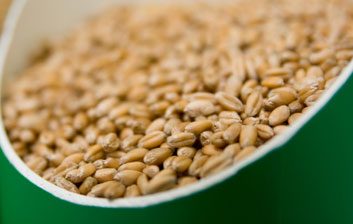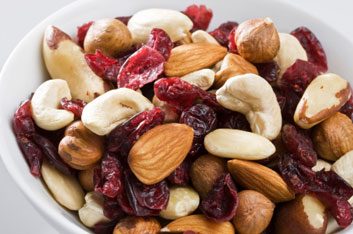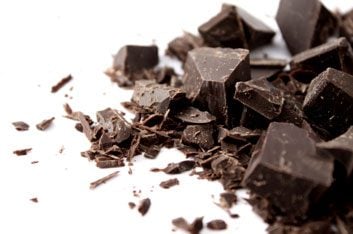
Eat well, live long
For people who are resistant to change, the idea of altering their dietary habits, which is necessary to prevent the development of cardiovascular disease (and all chronic diseases), is often perceived as a restriction, a sort of punishment incompatible with quality of life. According to their thinking, “You can live to be a hundred if you give up all the things that make you want to live to be a hundred” (Woody Allen).
However, nothing could be further from the truth! In practice, heart disease prevention means we can enjoy a great variety of delicious foods that will diversify our culinary experiences and bring us extraordinary gastronomic pleasure. Here are some ways to get started.

Fruits and vegetables
An impressive number of studies have shown that abundant consumption of plant foods is associated with a reduced risk of coronary disorders. This effect is particularly significant for green vegetables, cruciferous vegetables (cabbage, broccoli, etc.), and those rich in vitamin C (green vegetables in general). Specifically, each daily portion of fruits and vegetables reduces the risk of coronary diseases by about 4 percent, which is an excellent reason to eat these foods as often as possible.
While all plants have a positive impact on the risk of cardiovascular disease, some stand out. For example, recent studies suggest that the consumption of broccoli is associated with a marked reduction in the risk of heart disease. This result concurs with observations from a pilot study showing that consumption of young broccoli stems (100 g per day for a week) reduces LDL cholesterol (bad cholesterol) and increases HDL cholesterol (good cholesterol). More recently, another study has shown that broccoli’s protective role could also be linked to its ability to improve the heart’s muscle function and protect it from damage caused by free radicals.

Whole grains
Who would believe that a change in lifestyle as simple as replacing everyday white bread with bread containing whole grains could reduce the risk of coronary disease and stroke by 40 percent? But it really can!
Whole grains are one of those foods whose remarkable impact on the prevention of chronic diseases is greatly underestimated. We are so accustomed to the presence of refined flour in almost all of our cereal products that we forget just how much this refining eliminates most of the beneficial constituents of the grain. Whole grains contain an abundance of antioxidants, minerals, vitamins, phytochemical compounds, and fibres present in both the bran (outside layer) and the germ (layer inside the bran). It is becoming increasingly clear that all these constituents act synergistically to prevent the development of heart disease.

Nuts
We absolutely must rediscover nuts, too often dismissed because of their high fat content. They are a remarkable source of monounsaturated fats that are beneficial to the health of the cardiovascular system. Studies have shown that daily consumption of one portion of nuts reduces the risk of coronary disease by as much as 30 percent! This effect is even more pronounced if the nuts are replacing “processed” snacks rich in sugar, saturated fats, or trans fats.

Omega-3s
The first indication of the benefits associated with omega-3 fatty acids came from studies conducted among the Inuit of Greenland who, despite a diet almost exclusively based on the consumption of sea animal meat, are surprisingly unaffected by heart disease. The animals in their diet, and most fatty fish such as salmon, sardines, and mackerel, contain large amounts of eicosapentaenoic acid (EPA) and docosahexaenoic acid (DHA), two long-chain omega-3 fatty acids that play a major role in the prevention of certain coronary diseases.
Other major consumers of fish, such as the Japanese, who absorb on average almost 1 g of EPA and DHA a day, have a coronary disease mortality rate almost 90 percent lower than that of inhabitants of regions where little fish is eaten such as in North America. The protective effects of these fats can even be observed in less significant quantities: Modest consumption of about 250 to 500 mg of EPA and DHA a day-barely equivalent to a half-portion (100 g) of salmon-reduces the risk of mortality due to coronary disease by about 40 percent.
And this positive effect sets in quickly: Studies have shown that regular consumption of fatty fish causes positive effects on the heart within weeks by reducing episodes of arrhythmia, a pathology often responsible for sudden death.

Green tea
Recent studies show that people who drink at least two cups of green tea a day (about 500 mL) have a 16 percent lower mortality rate than those who drink less. This effect is especially pronounced in women: While the mortality rate of men who are regular tea drinkers is reduced by 12 percent, that of females is 23 percent lower, resulting in a protective effect two times greater! This protective effect seems mainly due to a major reduction in mortality rates associated with coronary disease (25 percent) and especially with stroke (60 percent).

Chocolate
A recent study shows that people who regularly consume 70% dark chocolate (about 20 g per day) show a marked improvement in blood flow, while no improvement is observed in those who eat “processed” chocolate, which contains very little cocoa paste. It seems that the positive effect of dark chocolate is linked to a property in its polyphenols that releases a chemical messenger, nitric oxide, which increases arterial dilatation, at the same time improving blood flow and reducing platelet aggregation.
However, it is important to note that previous studies have shown that milk prevents the absorption of dark chocolate’s polyphenols, thereby neutralizing its beneficial effects. Milk contains large amounts of casein, a protein that interacts with polyphenols and prevents them from being efficiently absorbed by the intestine. It is therefore always preferable to consume dark chocolate unaccompanied by milk. A similar phenomenon is observed with tea: While consumption of tea leads to a significant improvement in the ability of arteries to dilate, which confirms that the polyphenols contained in tea have a positive effect on the cardiovascular system, adding milk completely reverses this effect and neutralizes its positive effects on the cardiovascular system.

Red wine
Red wine is a very complex product that contains several thousand chemical compounds, but it is generally acknowledged that the positive effects associated with moderate consumption of wine are mainly due to a molecule called resveratrol. This molecule, which is found in significant quantities only in red wine, has many positive effects on the cardiovascular system, including restricting the formation of blood clots that can block blood vessels, causing serious problems.
Red wine’s protective effect against heart disease has been well illustrated and is now called the “French paradox”: People who regularly drink red wine have quite a low mortality rate for heart disease, despite the presence of many risk factors such as smoking, hypertension, and high levels of blood cholesterol.
Related:
• Do you know these heart attack symptoms?
• 3 ways men can protect themselves from heart disease
• “A heart attack saved my life”
Excerpted from Eating Well, Living Well Copyright © 2009 by Richard Béliveau, Ph.D., and Denis Gingras, Ph.D. Translated by Valentina Baslyk. Excerpted by permission of McClelland & Stewart. All rights reserved.
